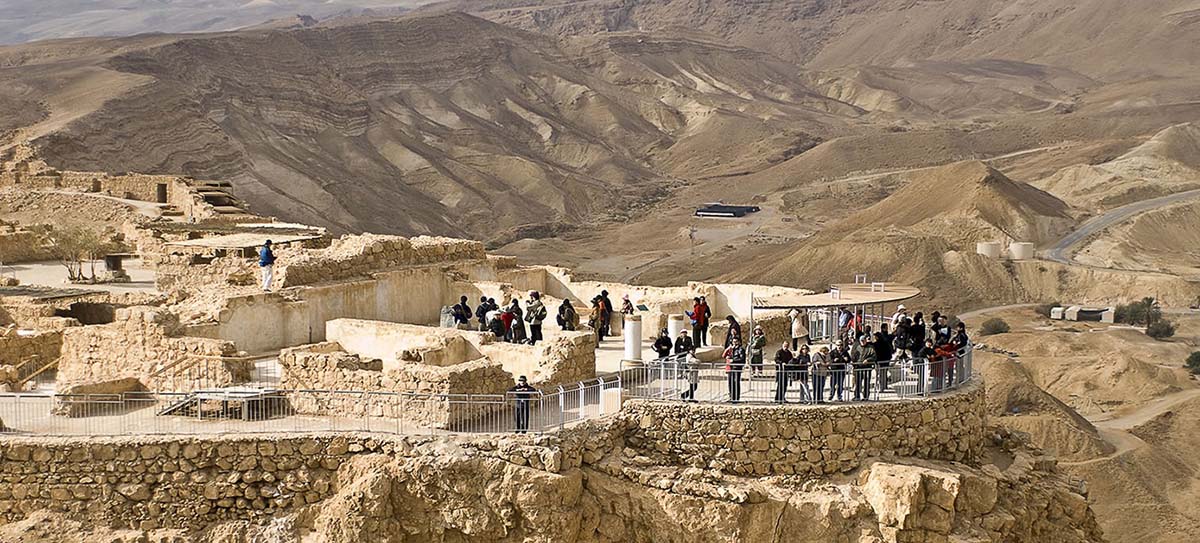
When I was a child there was a very popular TV series called Masada, a historical drama with stars of the moment like Peter O'Toole, Peter Strauss and Barbara Carrera. It was then that I first heard the name of Masada and the story of it. fortress in the Judean desert in Israel.
Today the ruins, huge and still majestic, form the Masada National Park and are World Heritage, so if one day you go to visit Israel you cannot leave them out of your route.
Masada
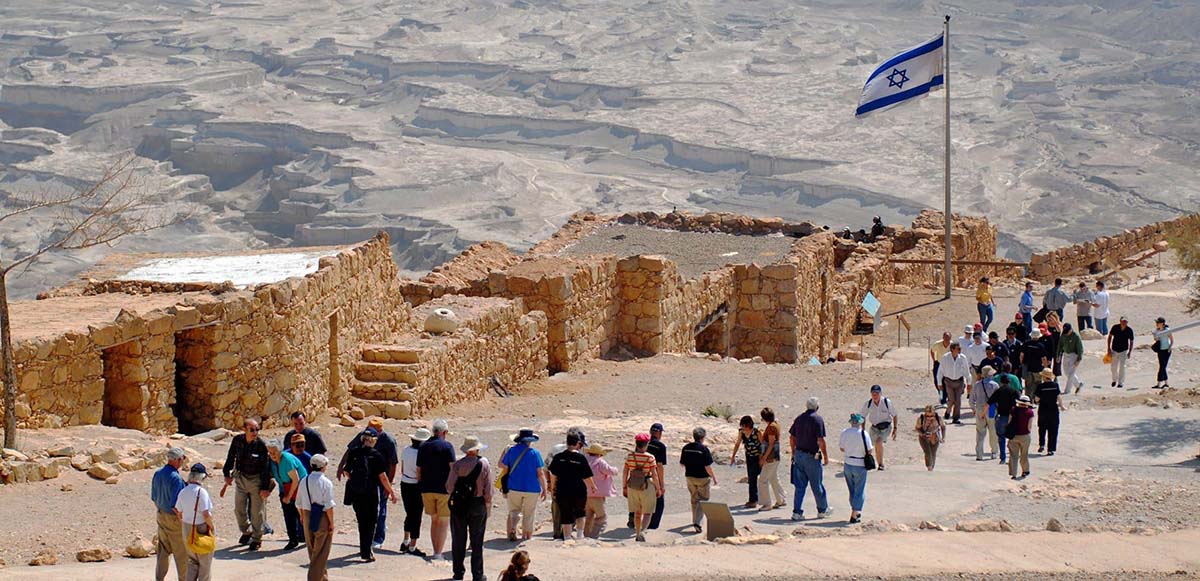
The ruins comprise palaces and fortifications built on a hill in the Judean desert, near the Dead Sea, in present-day Israel. The television series you referenced above tells us about the last moments in the war between Jews and Romans, known to history as the Great Jewish Revolt. The Jewish people took refuge up here and the Romans besieged the place and they harshly besieged him until the inmates chose to commit collective suicide.
Hence Masada is something of a synonym for Jewish nationalism and its assertion as a people. Since 1966 the entire area has been a National Park, since 1983 it has been part of the Judean Desert Nature Reserve and since 2001 it is a World Heritage Site according to UNESCO.

The terrain on which Masada stands is part of a young tectonic massif, without much erosion, irregular in shape but very similar to a pyramid without a point. The plateau thus measures about 645 meters long by 315 wide, with a total area of about 9 hectares. On the eastern side there are cliffs 400 meters high and on the other side they are around a hundred meters. So, the accesses to the top are difficult.
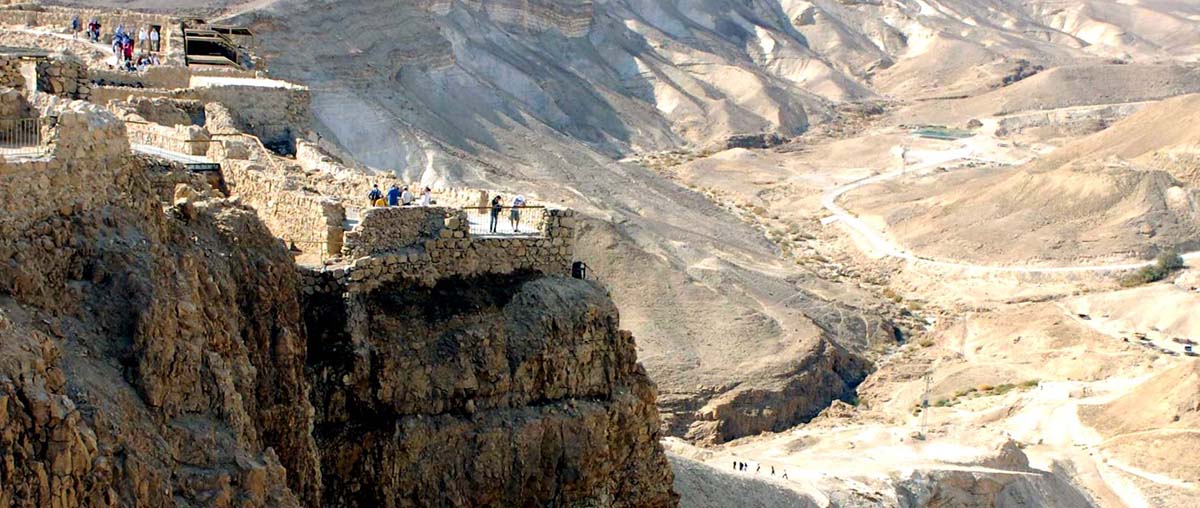
Although remains of ancient settlements have been found, according to the historian Flavio Josefo the fortress was built by the Hasmonean king Alexander Janneo and the discovery of some coins and stucco from that time would indicate that the idea is not wrong. But the history that interests us of Masada is later and occurs at the time of the conquest of Judea by Pompey.
The king Herod, famously, housed members of his family here while he traveled to Rome to request reinforcements to control the region. The fortress then withstood a strong siege by the Parthians, and only a miraculous rain saved them from having to succumb, as they had run out of water. Meanwhile, in Rome, Herod won the support he sought and returned as King of Judea and little by little he conquered the region, ultimately causing Jerusalem to fall.
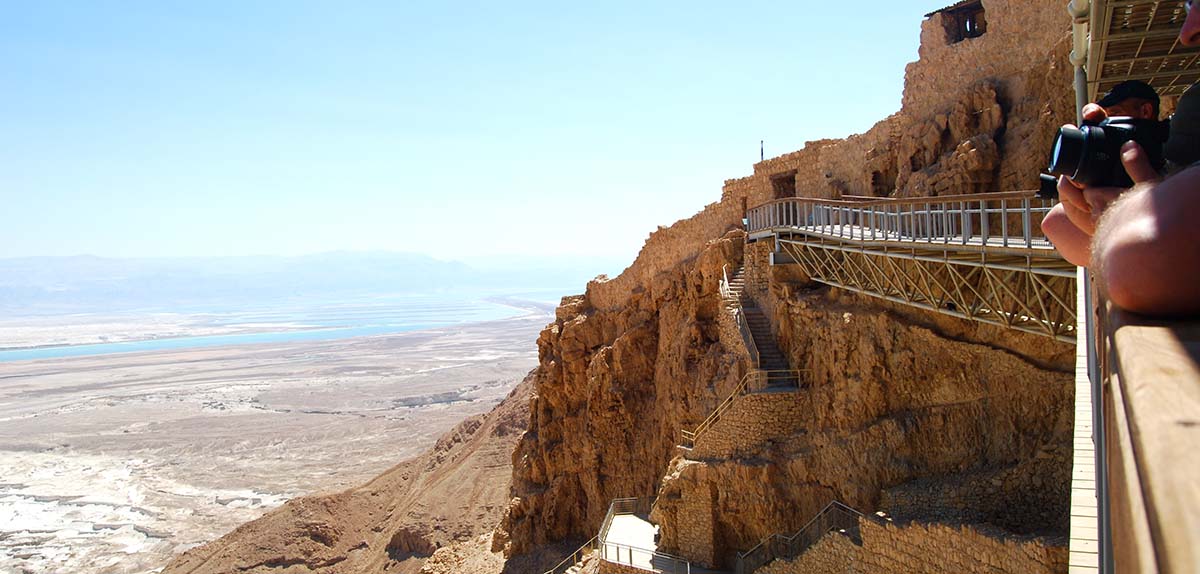
But they were troubled times: supported by Marco Antonio Cleopatra VII expanded her kingdom, so Herod strengthened Masada thinking that one day he would need a somewhat insurmountable place. Seven decades after his death, the First Jewish - Roman War since the tension was in growing. A group of radical Jews worked in the uprising, others joined and so in the end a group Copó Masada killing the Roman garrison stationed there.

In the following years the area was a volcano and Masada was identified as a particularly unruly spot. Then the Romans took action on the matter and decided to kill the Jewish refugees there surrounding it with many military camps. The commander planned everything in detail, focusing on entering through the western slope access. After trying unsuccessfully to break through the walls, he decided to build a ramp that after several weeks reached 100 meters in height.
Tras seven months of siege The ramp was completed and a 30-meter high iron-reinforced siege tower was built at the top. From here the Romans fired and the ram that gave it to the wall worked. After a while the Romans realized that the Jews had built a harder one behind the wall, so they canceled the attacks and burned that structure.
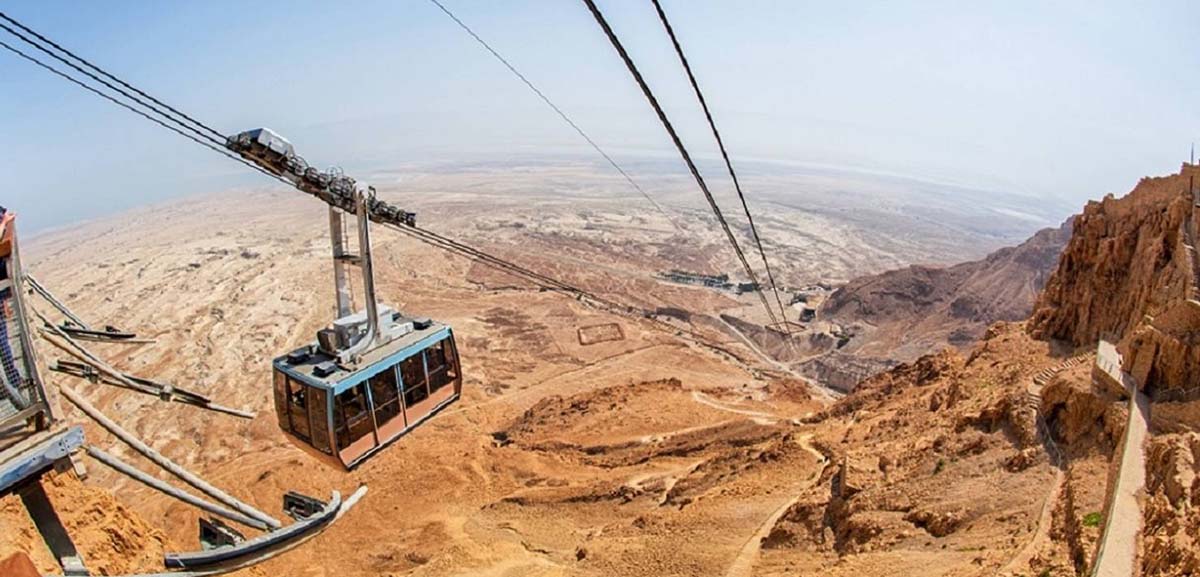
The Jews inside Masada were in trouble and decided to kill themselves: the men killed his family and then chose ten to kill each other. And so on until there was only one man left who, by remaining alone, set the fortress on fire. When the Romans finally entered, they found a tomb.
But when was Masada found by archaeologists? It was at the beginning of nineteenth century, in 1838 specifically. Since then the area has become very interesting and everything was excavated and mapped. A major archaeological excavation took place in the 60s.
Masada Tourism
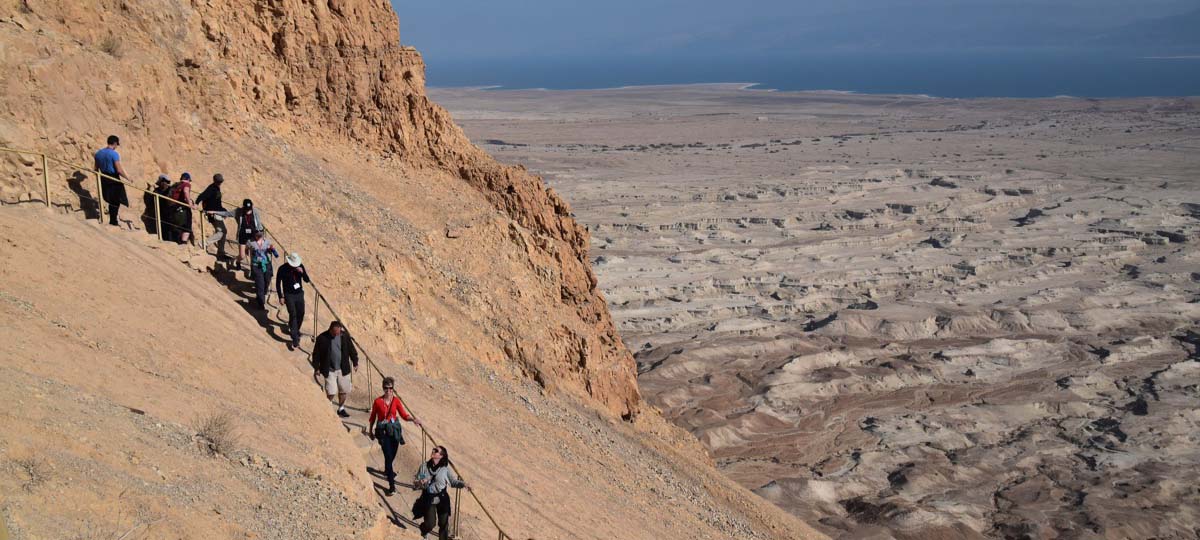
What is possible to see in Masada? El western complex It is accessible from Arad, by route 3199. Here you will see the reconstruction of Roman machinery from the site to Masada, the roman ramp whose climbing involves between 15 and 20 minutes of ascent, the ancient northern cisterns dug out of the mountain and, for a separate price, you can stay to sleep in tent. there is also a light and sound show at night in the amphitheater.
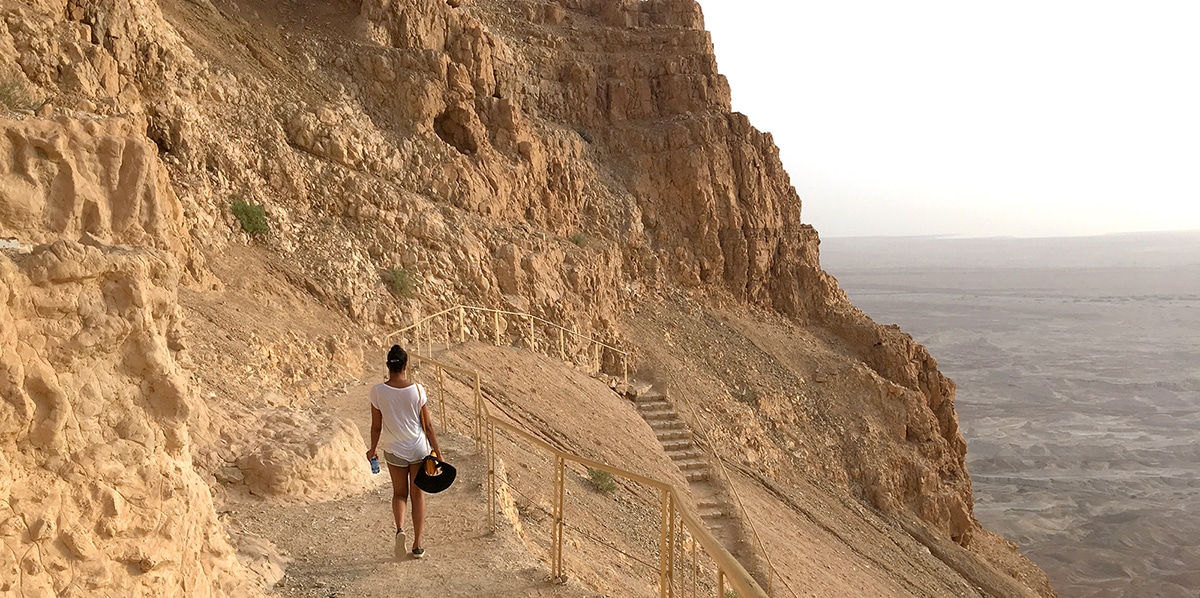
On the mountain plateau are the ruins of the North Palace, what remains of Herod's private three-tiered palace with a mosaic floor and murals that have been reconstructed, the ruins of the only remaining synagogue from the time of the Second Temple, the room where the names of all the hitmen were found, the majority group of Jews who were locked up in Masada during the revolt, a byzantine church built by hermit monks also with mosaic floors, the Western palace, enormous and also dating from the time of Herod, the roman baths, the commander's rooms with murals and the south cistern, huge space under the mountain.
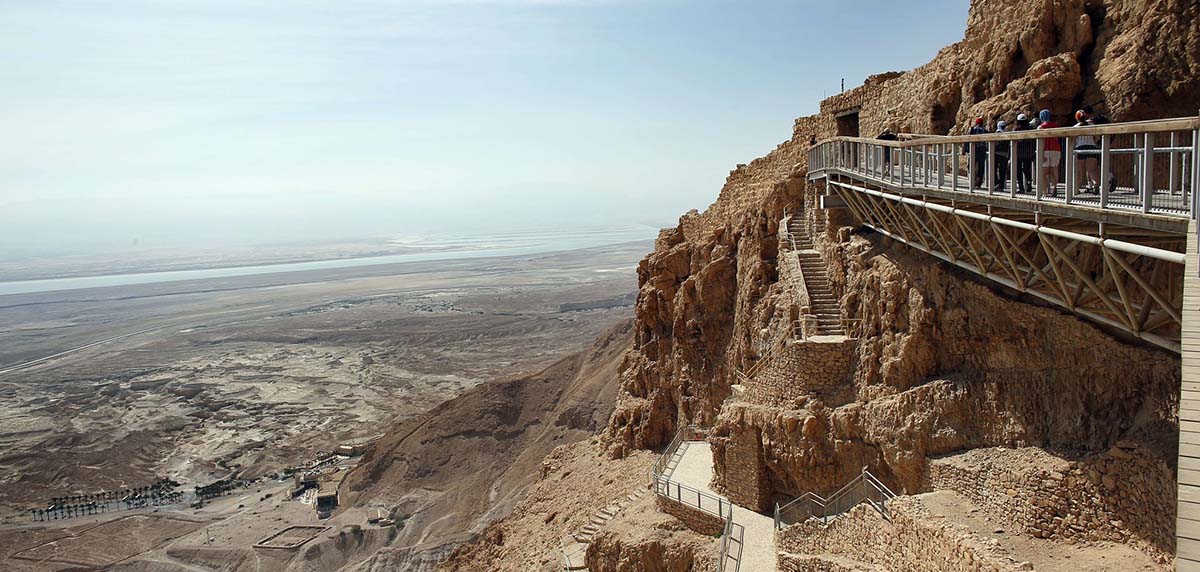
Accessing from the Dead Sea, route 90, one enters through the east entrance where there is a gift shop, a first aid station, a restaurant and cafe.
Also here is the Masada Yigal Yadin Museum, opened in 2007, which offers a narrative experience of the events around the fortress, giving a good background to visit, the cableway which takes you to the door of the Serpent Way, the most difficult, which can now be covered on foot, involving an hour up and a half down.
The visit is really wonderful. You may book the entrance to the Masada National Park online, via the official website, selecting the date.